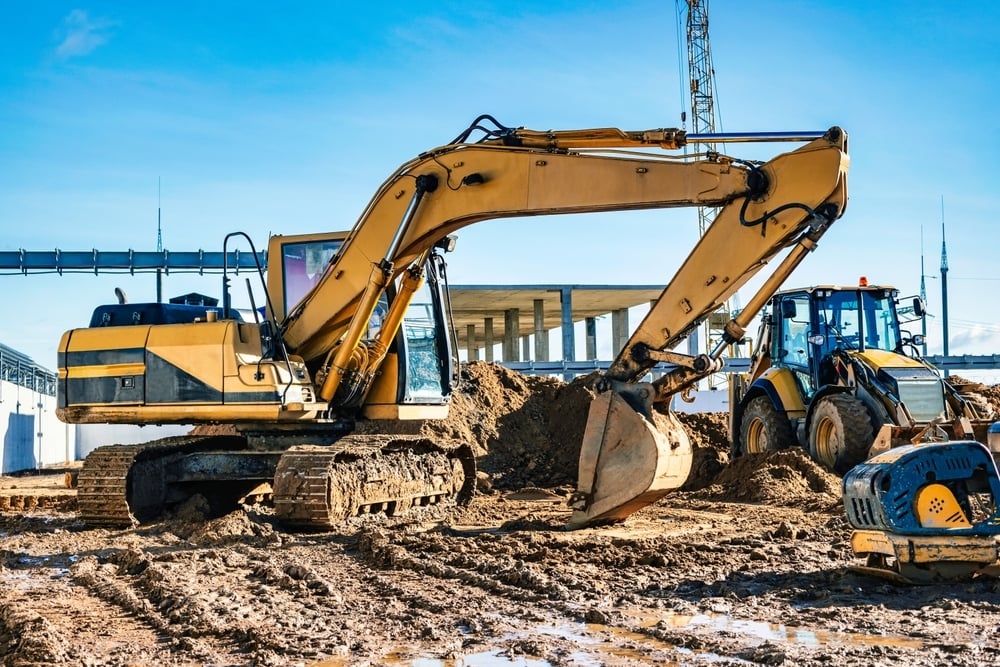2023 Year-End Tax Planning Tips for the Construction Industry
As 2023 comes to an end, it is time to start planning for the next year’s tax season. When formulating a plan to ensure an optimized refund,...
4 min read
Baldwin CPAs 11/17/25 12:22 PM

As 2025 winds down, contractors across the U.S. are closing the books on another unpredictable year for construction materials and input costs. While general inflation has eased since 2023, the construction industry continues to face pockets of volatility, especially in steel, asphalt, and fuel. According to the U.S. Bureau of Labor Statistics’ (BLS) August 2025 Producer Price Index (PPI), costs for “inputs to construction industries” were up 1.7 percent year-over-year, driven by renewed increases in key industrial commodities.
For contractors preparing bids for early 2026, understanding what the PPI data reveals and how to integrate it into cost models can make the difference between maintaining margins and absorbing unexpected losses. As the Associated General Contractors of America (AGC) recently noted, “Price relief in some categories is offset by stubborn inflation in others, making cost-tracking and contingency planning essential tools for contractors entering 2026.”
The Producer Price Index measures average changes over time in selling prices received by domestic producers for their output. For construction, the most relevant categories are:
Each index captures a portion of the overall cost picture from raw inputs like steel, diesel, and lumber to the materials and services purchased for projects. When tracked monthly, these indices form a near-real-time snapshot of input cost direction, helping estimators anticipate shifts before they show up in supplier quotes.
According to the BLS August 2025 release and AGC analysis:
AGC’s August report highlighted that volatility remains “category-specific.” Contractors depending heavily on steel, asphalt, or diesel-based operations, such as road builders and structural contractors, should continue modeling costs at the upper end of 2024–2025 ranges when projecting into 2026.
Engineering News-Record (ENR) construction cost indexes show that material pricing has diverged regionally. As of September 2025, Southern and Midwestern markets have seen smaller increases in steel and cement costs than coastal metros. Regional diesel logistics and freight costs continue to widen those gaps, emphasizing the importance of using regional cost indices rather than national averages in bid preparation.
For estimators, the most practical use of the PPI is as a benchmark for escalation modeling. For example, if the steel mill products PPI increased 3.8 percent year-over-year, a contractor procuring fabricated steel in six months might reasonably assume a 1–2 percent additional escalation unless market indicators suggest otherwise. This kind of forward-looking adjustment ensures bids stay competitive yet resilient to cost increases.
AGC recommends contractors revisit escalation clause language before entering new fixed-price agreements. A best practice is to link escalation thresholds directly to relevant PPI categories—such as “Inputs to Nonresidential Construction”—so that any material cost changes above a specified percentage trigger equitable adjustments.
These clauses not only protect contractors from absorbing unexpected increases but also promote transparency with owners. Referencing official BLS indices lends objectivity to negotiations and minimizes disputes over subjective supplier pricing.
The Federal Reserve’s FRED database tracks decades of construction PPI data, allowing contractors to identify cyclical patterns. When combined with ENR’s local indexes, firms can build dynamic cost models that reflect both long-term trends and regional realities. This approach helps refine contingency planning, lending accuracy to both bids and cash-flow forecasts.
Although inflation has cooled, the Federal Reserve has maintained relatively high interest rates through late 2025 to ensure price stability. These higher borrowing costs ripple through the supply chain, raising financing costs for suppliers and contractors alike. For construction firms relying on credit lines for materials or equipment purchases, these expenses should be factored into bid pricing and overhead projections.
Global shipping routes remain unpredictable. While freight rates have eased from early-2025 peaks, disruptions in the Red Sea and Panama Canal have continued to affect delivery times and fuel consumption. AGC notes that “extended lead times are still influencing availability of imported steel, electrical components, and HVAC systems.” Contractors should adjust schedules accordingly and, where possible, lock in early orders for long-lead items.
While not directly reflected in the PPI, rising skilled labor costs remain a significant pressure point. Many contractors report labor expenses up 4–5 percent year-over-year, reflecting sustained demand for qualified tradespeople. Estimators should therefore treat PPI trends as only one half of the inflation picture; labor modeling must complete the forecast.
BLS updates PPI data monthly, usually by the second week of each month. Contractors who integrate these figures into internal dashboards or accounting systems can detect trends before they affect bids. Baldwin CPAs often recommends building monthly PPI updates into management reporting for construction clients, particularly those managing multiple concurrent projects.
Rather than applying a static 5–10 percent markup to every bid, estimators can link contingencies to specific cost categories. For example:
This method keeps bids competitive while reducing exposure to volatility.
Early purchasing of long-lead materials can reduce cost uncertainty, but it also requires strong cash-flow management. Contractors should coordinate with their accountants and tax advisors to ensure that early material purchases align with year-end financial strategy, depreciation timing, and available tax deductions.
Our dedicated Construction Industry team delivers audit & assurance, tax compliance & planning, and advisory services. Visit our Construction practice page to learn how we partner with firms like yours: Baldwin CPAs – Construction Services.

As 2023 comes to an end, it is time to start planning for the next year’s tax season. When formulating a plan to ensure an optimized refund,...

Despite a sluggish start to the year, experts anticipate that forthcoming interest rate cuts in the latter half of the year will catapult several...

What Changed: A Fast Overview for Contractors The One Big Beautiful Bill Act (OBBBA), enacted earlier in 2025, restored 100 percent bonus...